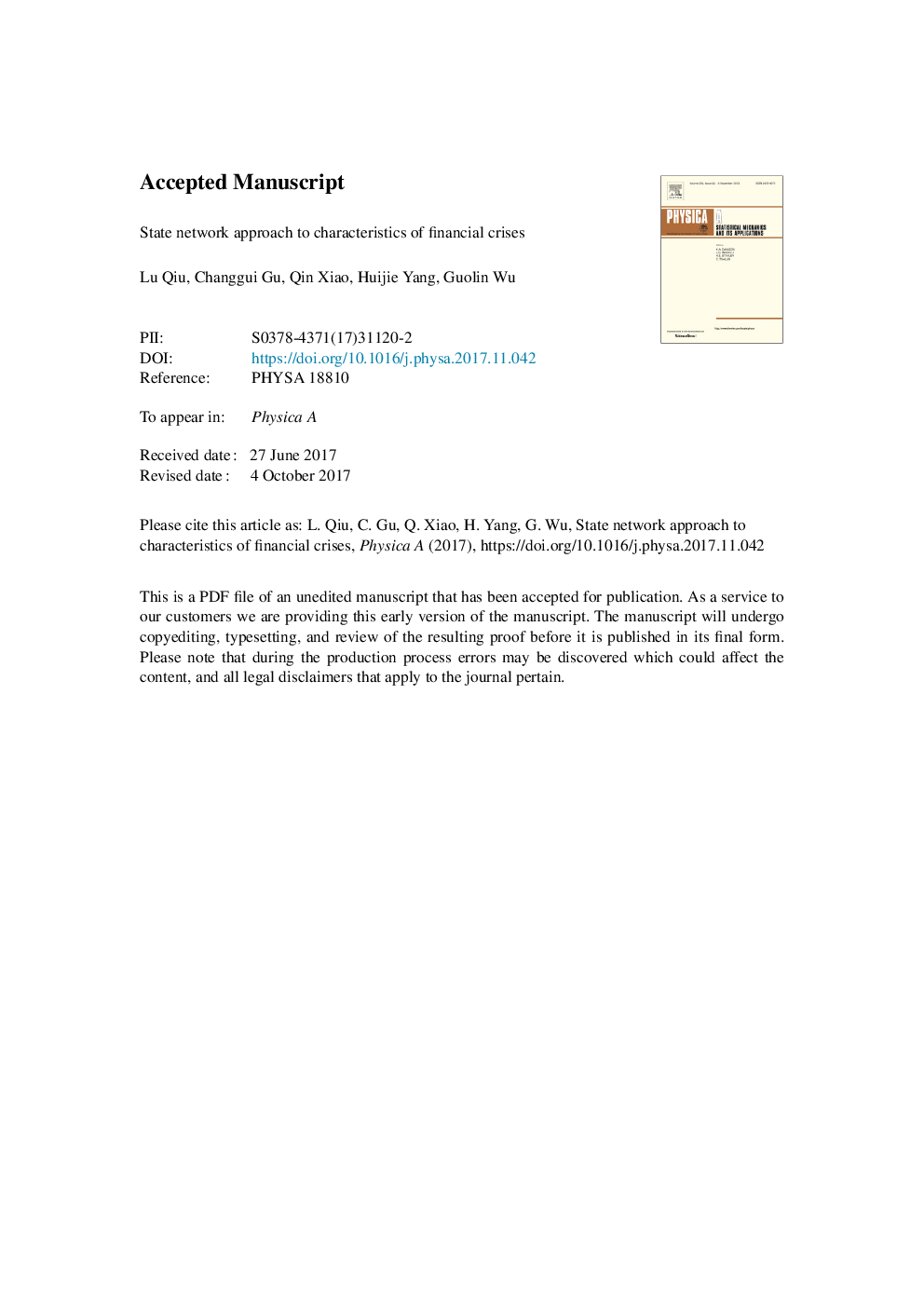| Article ID | Journal | Published Year | Pages | File Type |
|---|---|---|---|---|
| 7376627 | Physica A: Statistical Mechanics and its Applications | 2018 | 10 Pages |
Abstract
Extensive works have reported that a financial crisis can induce significant changes to topological structure of a stock network constructed with cross-correlations between stocks. But there are still some problems to be answered, such as what is the relationship between different crises in history and how to classify them? In the present work, we propose a new network-based solution to extract and display the relationships between the crises. The Dow Jones stock market is investigated as a typical example. The cross-correlation matrix between stocks is used to measure the state of stock market, called state matrix. All the states cluster into six sub-categories. A state network is constructed further to display the relationships between all the states, which contains a total of nine communities. It is found that three crises C,D and E (refer to the Lehman's bankruptcy in 2008, the Euro-zone and International Monetary Fund decide the first bailout for Greece in 2010, and the European sovereign debt crisis in 2011, respectively) belong to a specific sub-category and cluster in a single community. The mid-stage of C is closely linked with E, while the other stages with D. The other two crises A and B (refer to the financial crisis in Asia in 1997, and the burst of ”dot-com bubble” in 2002, respectively) belong to another sub-category and gather in a corner of another single community. A and B are linked directly with C and D by two edges. By this way, we give a clear picture of the relationships between the crises.
Related Topics
Physical Sciences and Engineering
Mathematics
Mathematical Physics
Authors
Lu Qiu, Changgui Gu, Qin Xiao, Huijie Yang, Guolin Wu,
